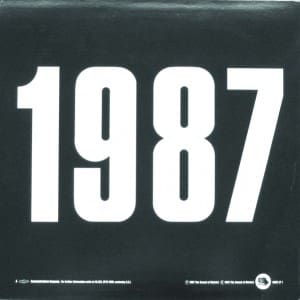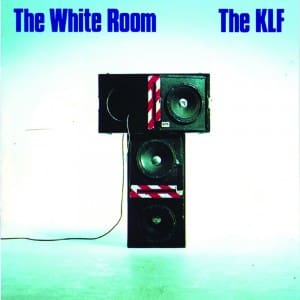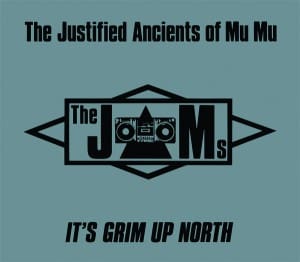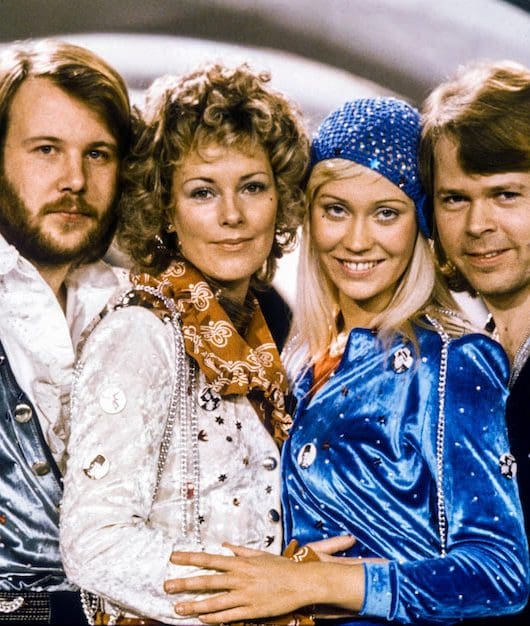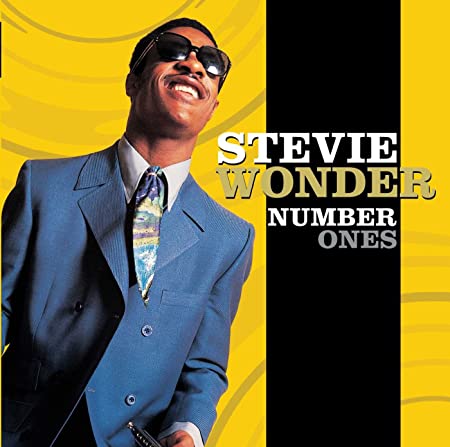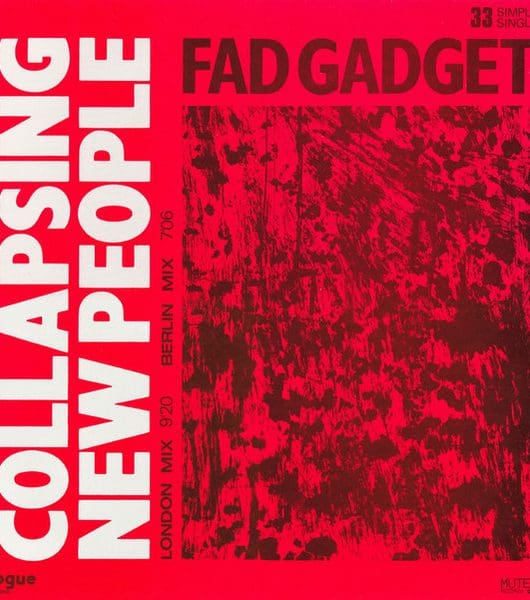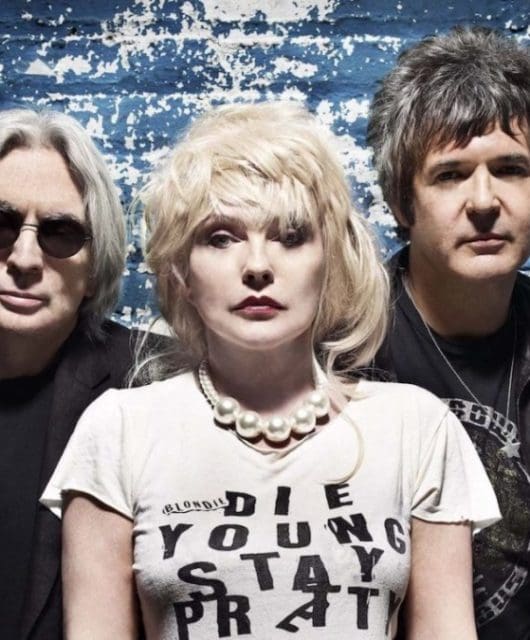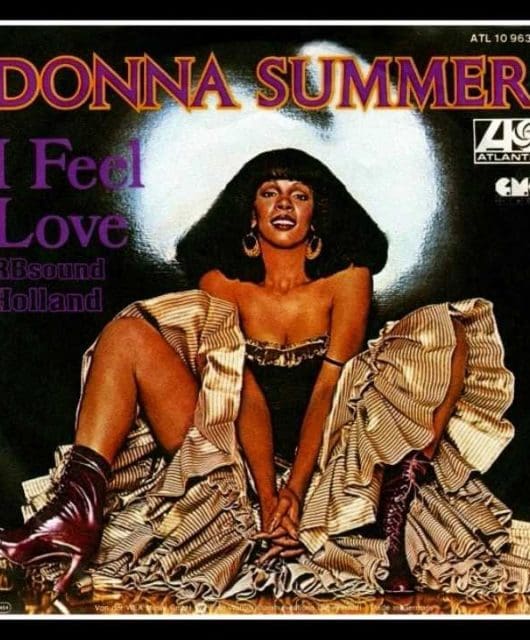The complete guide to The KLF
By Ian Peel | March 10, 2022
With The KLF, Bill Drummond and Jimmy Cauty completely disrupted the musical landscape of the early 90s. And then they vanished, attempting to take all trace of their work with them. Three decades on, we sift through the albums, singles and mythology.
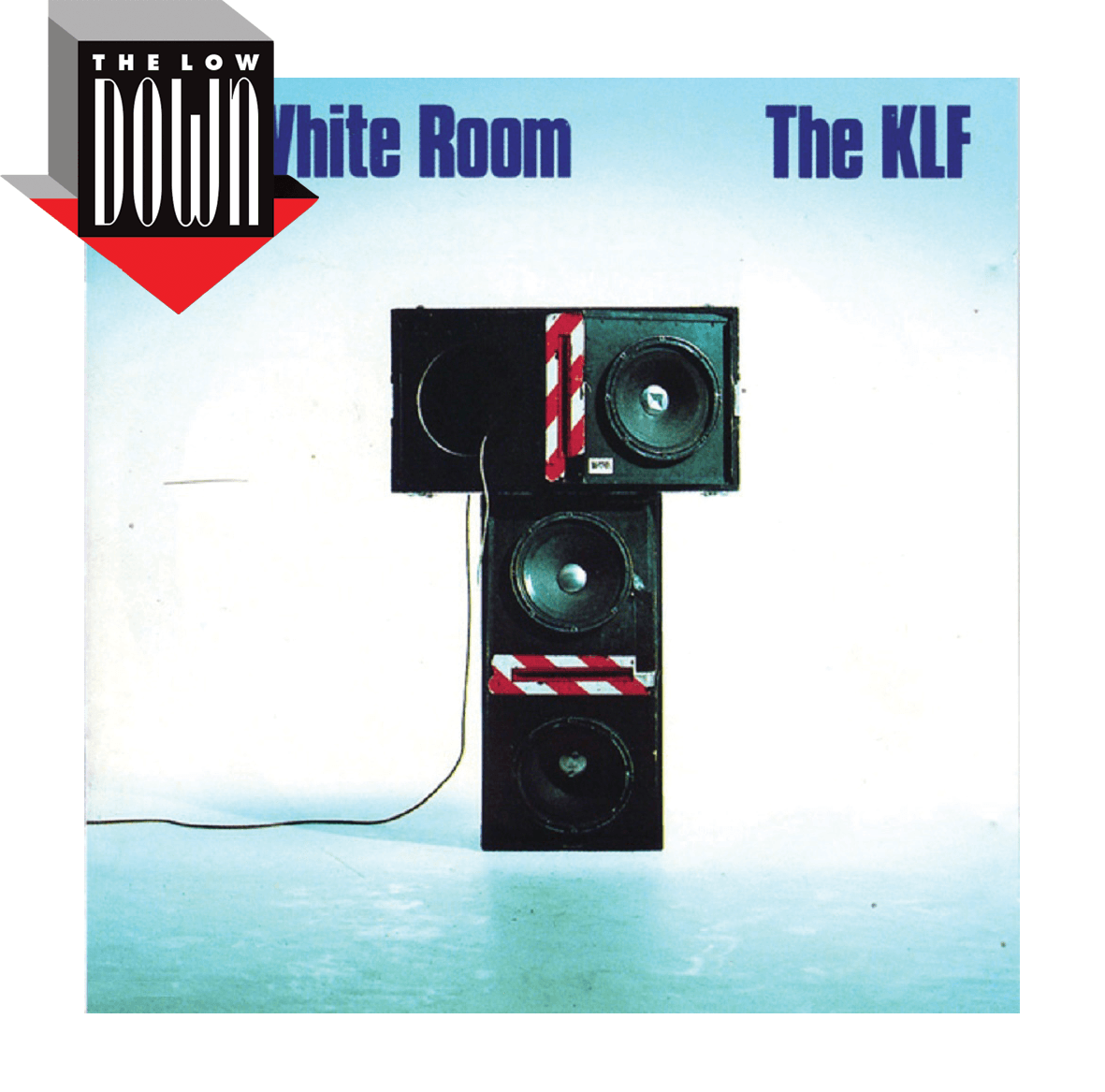
The KLF – a duo of Bill Drummond and Jimmy Cauty – may be best-known for a clutch of hits in the early 90s, but that’s just the tip of the iceberg. A pop group in the truest sense, The Kopyright Liberation Front weren’t just about singles, but also design, films, publicity stunts, art pranks, information, disinformation and mythology. All of which was of their own making.
It all started with The JAMs – The Justified Ancients Of Mu Mu – Drummond and Cauty’s first pseudonym, under which they recorded radical, sample-heavy pop abstractions on their own indie label, KLF Communications. A lawsuit from one of the bands they sampled, ABBA, led to their first album, 1987 (What The Fuck Is Going On?), being withdrawn from sale.
But rather than give up, The JAMs burned the entire run and shot photos of the process for the cover of their next LP, Who Killed The JAMs?.
A novelty hit about Doctor Who under the name The Timelords gave the duo the means to start shooting a string of surreal films. The most slaved-upon, The White Room, remains unfinished to this day.
Abandoning The JAMs moniker for The KLF led to a string of releases of rudimentary trance, followed by groundbreaking ambience and then demonstrative, deafening dance-pop. But it was all too much and the pair announced their retirement from the music business, as well as the deletion of most of their output.
Drummond and Cauty spent the late 90s operating as The K Foundation, an artistic outlet for their post-retirement income (which they eventually squandered quite spectacularly in their final films together, Watch The K Foundation Burn A Million Quid and This Brick). The imminent arrival of the year 2000 inspired the pair to make a brief return (as 2K) with a single, Fuck The Millennium, and a plan to demolish Stonehenge on New Year’s Eve (as K2 Plant Hire).
Since then… nothing. But with a catalogue as rich as theirs, there’s plenty to get your head around as we wait for the duo’s return. And there’s nothing wrong with waiting – in fact, they once made a whole movie about it…
Read more: Top 20 80s house hits
The must-have albums
1987 (What The Fuck Is Going On?) 1987
The one that’s known more for its mythology than its music
The first collaboration between Drummond and Cauty (the latter having just finished with the group Brilliant) was a smash-and-grab, anarchistic playground of samples, rants, raps and cut-ups. Released under the moniker The Justified Ancients Of Mu Mu, this album – which contained their debut single, All You Need Is Love – was almost immediately banned for sale on account of its mountain of uncleared samples.
From The Monkees to Samantha Fox, the duo left no vinyl unturned to build a soundscape of Robin Hood-style audio thievery. When ABBA took offence to a large chunk of Dancing Queen forming the basis of one track, 1987 was over. But the cult of The KLF was just beginning.
Drummond and Cauty publicly burned all remaining copies of the album and released a replacement disc, 1987: The JAMs 45 Edits, replacing all samples with silence.
Shag Times 1989
The transition from The Justified Ancients Of Mu Mu to The KLF

The JAMs’ parting shot was this double- album compilation, which featured the best of the duo’s singles and album tracks on the first disc, with a selection of minimalist Euro mixes under their emergent KLF moniker on the second.
The thrust of the first was again Cauty’s liberal sampling of female-fronted pop songs – Whitney Houston (I Wanna Dance With Somebody) on the legendary single Whitney Joins The JAMs, and Petula Clark on Downtown – while Drummond delivered a series of trademark, frighteningly convincing rants over proceedings.
There was also the censored version (basically, with the 15-second Beatles sample taken out) of their debut single, All You Need Is Love. The seven proto-KLF tracks on the second disc were listed only by their beats per minute, paving the way for the duo’s Pure Trance series, and included a rework of a track by Cauty’s post-Brilliant, hands-in-the-air outfit Disco 2000.
Chill Out 1990
The first album under The KLF name, and an ambient house epic
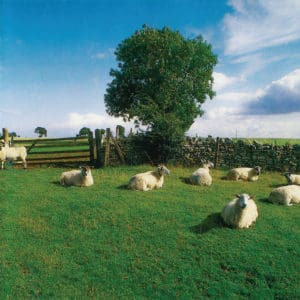
With no hit singles and no discernible songs to speak of, Chill Out was the sound of people and spirits drifting along the coast of America. One of the most influential albums of 90s electronica, floating in and out of this 45-minute, continuous mix were melodies that would pop up in the duo’s later work, like the chorus from Justified & Ancient and the orchestral breakdown from Last Train To Trancentral.
A host of samples were used like a palette to paint an imaginary Technicolor motion picture, with snippets of Elvis Presley’s In the Ghetto, Fleetwood Mac’s Albatross and Acker Bilk’s Stranger On The Shore underpinning the whole thing and adding an eerie continuity to proceedings.
Excerpts from the classic-pop canon, which would’ve been very much at the forefront of Drummond and Cauty’s DJ boxes in 1990, included After The Love by Boy George’s Jesus Loves You project and Pacific State by The KLF’s electro contemporaries 808 State.
The White Room 1991
When the underground went overground, and hit singles erupted
The money that came in from a first UK number-one hit – Doctorin’ The Tardis by The Timelords – was burning a hole in Drummond and Cauty’s pockets. So they headed to the Sierra Nevada mountains in the US to make a movie about the search for a mythical white room full of rejuvenating powers.
As the money started to run out, they tried a new novelty single – Kylie Said To Jason – but it flopped. As one last stab at chart success, they then came up with an in-yer-face remix of one of the Pure Trance 12”s, What Time Is Love?, and their fortunes instantly reversed.
The movie’s ambient soundtrack was cancelled in favour of turning The White Room into the refreshed, upbeat album that eventually appeared. A bonus disc was added when a ballistic re-recording of Justified & Ancient Seems A Long Time Ago from Chill Out – with vocals from Tammy Wynette – became a No.2 hit in the UK.
Read more: Making The KLF’s The White Room
Read more: 90s dance – the essential playlist
The Classic Singles
What Time Is Love? 1990
Often revisited, the musical root of the duo’s greatest moments

The version we’re talking about here is officially known as What Time Is Love? (Live At Trancentral) by The KLF featuring The Children Of The Revolution (don’t be fooled by the fake crowd noises – the track wasn’t recorded in concert, the Trancentral of the title referring to the duo’s recording studio).
An earlier version of the track – the eight-minute Pure Trance Original – was a stripped-down, pre-rap and pre-hooks edition that appeared a couple of years before but failed to bother the charts on either side of the Atlantic.
But the song gradually gnawed away at the consciousness of club-goers and, when reworked into this, the first of the Stadium House trilogy (and with a 12” remix by Echo & The Bunnymen), it became the duo’s first and most enduring hit, reaching No.5 in the UK in August 1990 (it also hit No.13 on the US dance chart).
Read more: The Bristol sound
Read more: Making Massive Attack’s Blue Lines
3AM Eternal 1991
The spine-tingling second instalment of the Stadium House trilogy
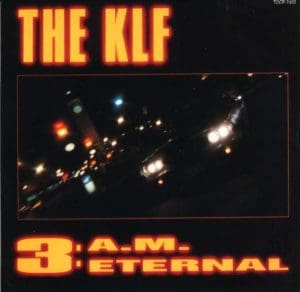
3am Eternal (Live At The SSL) roared to the top spot in the UK and No.5 in the US (the duo’s first major hit Stateside), having again evolved out of a long-form, minimalist Pure Trance 12” released two years before.
There couldn’t have been a more upbeat, cinematic hit record to have come out of the late-80s/early-90s dance revolution, something that Drummond and Cauty perfectly deconstructed when they retired from the music business just two years later.
The KLF’s grand finale took place at the 1992 Brit Awards, where they performed a thrash- punk version of 3am Eternal in collaboration with Ipswich metal-heads Extreme Noise Terror, with Bill Drummond raining machine gun fire across the audience’s heads. The likes of Seal and Lisa Stansfield, who were the big winners at that year’s ceremony, wouldn’t have known what hit them.
Last Train To Trancentral 1991
“All aboard! All aboard!” Anthemic is not a strong enough word
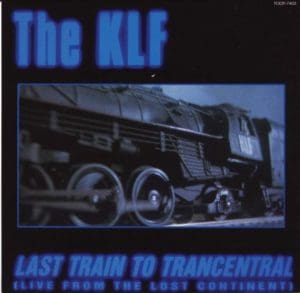
When Pure Trance 5 – aka E-Train To Trancentral – was remixed and revamped into Last Train To Trancentral (Live From The Lost Continent), Drummond and Cauty almost scored their second UK No.1 hit, reaching No.2 in May 1991 (the track was kept off the top spot by Cher’s The Shoop Shoop Song (It’s In His Kiss)).
The final part of the Stadium House trilogy, it sampled both What Time Is Love? and 3am Eternal, and references the obsessions that inspired the duo’s greatest works: namely, the Illuminati and the lost continent of Mu.
Last Train To Trancentral received another lease of life in the 00s when it became the soundtrack to the grand finale of acclaimed US performance-art collective Blue Man Group’s show. Like its predecessors’, the rap comes from Ricardo da Force (N-Trance).
America: What Time Is Love? 1991
The start of a new genre, but the last-ever KLF single
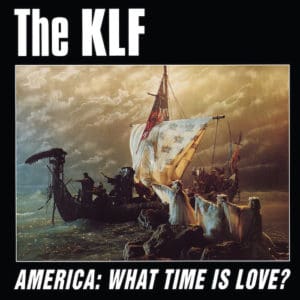
Was it a conscious attempt to have another US hit or merely a sign that they’d finally run out of ideas? The KLF’s final single offering was made available in the States at the tail end of 1991, but didn’t see the light of day in the UK until February 1992, in the aftermath of their notorious Brit Awards appearance with Extreme Noise Terror (see 3am Eternal), where they announced their retirement from the industry.
Mixing Deep Purple vocals, Motorhead guitars and – as a precursor to K Cera Cera – a male voice choir singing “America” to the melody of Aquarius from Hair, The KLF couldn’t have gone out in more flamboyant style. As a reprise, the B-side, America No More – said to be the final KLF track Drummond and Cauty ever recorded – was a downbeat, post-Chill Out ambient-plus-bagpipes excursion.
It’s Grim Up North 1991
The one that caused a fracas in the House of Commons
Released at the height of The KLF’s chart success, It’s Grim Up North saw Drummond and Cauty switch names back to The JAMs for a slab of industrial trance that was far darker than their previous singles. Drummond recited a list of northern towns, before the whole thing broke down into a rendition of the hymn Jerusalem.
“The north will rise again,” it said at the end of a windswept video performed on one lane of a motorway. And when the title mysteriously appeared graffitied across a bridge on the M1, Labour MP Joe Ashton tabled a motion in the House of Commons to either have it removed or replaced with, “There’s Nowt But Folk Living In Cardboard Boxes In London.”
K Cera Cera (War is Over if You Want It)
The unheard single, reserved solely for “selected state occasions”

Just when it seemed like The KLF were well and truly over, Drummond and Cauty recorded a mash-up of Doris Day’s Que Sera, Sera (Whatever Will Be, Will Be) and John & Yoko/The Plastic Ono Band’s Happy Xmas (War Is Over) with a male voice choir, for a one-off release under the guise of The K Foundation Presents The Red Army Choir.
The pair had initially stated that the track would only ever see the light of day “when world peace is firmly established”, but they made a “temporary exemption” and released it as a one-track CD single in Israel and Palestine to recognise progress in the relationship between the Israeli government and the PLO.


